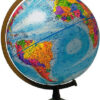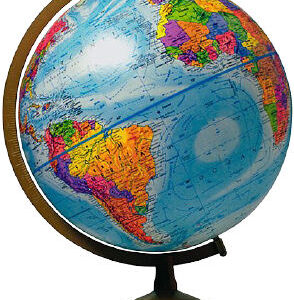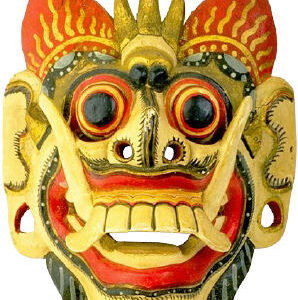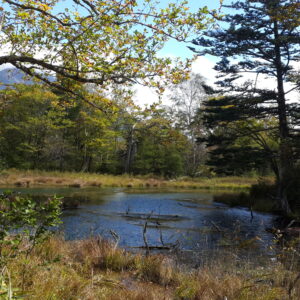物理與化學基礎.應用33套精緻版
不單片銷售.需購滿10套或整套享有優惠價
E01-19-005牛頓運動定律在棒球運動應用
英文發音.英文字幕.2012.16分鐘.1DVD
Kinesiology is the study and application of physics to body movement – energy, work, friction and inertia. This program explores the application of Newton’s Three Laws of Motion in baseball regarding pitching and hitting. Kinesiologists at the American Sports Medicine Institute use video motion capture to study the biomechanics of a pitcher’s delivery to optimize performance and help reduce injury.
E01-19-006化學元素週期表
英文發音.英文字幕.2012.10分鐘.1DVD
Chemistry has an impact on every aspect of our daily lives. The most important chemistry reference is the Periodic Table of the Elements. By providing a logical, mathematical method of organization, the table has become a critical tool for students, teachers and scientists around the globe. This program explores the discoveries that led up to the organization of the periodic table and how it is presently organized. It introduces and explores several elements (Hydrogen and Titanium) and their effect on our daily lives and the environments in which they occur.
E01-19-007化學元素鉀.鎂應用
英文發音.英文字幕.2013.15分鐘.1DVD
The Periodic Table is organized with elements specified in rows, or periods, according to increasing atomic number. Metals are on the
left of the periodic table, while nonmetals are located on the right. Some in the middle are called metalloids because they have characteristics of both metals and nonmetals. The periodic table is purposely arranged into vertical classifications called groups. Columns of elements help define element groups. Some of the notable groups of elements include the noble gases (column 18), the halogens (column 17), the alkali metals (column 1) and the alkaline earth metals (column 2). The transition metals are located in the center of the periodic table. They include many of the common metals, such as copper, iron, silver and gold. The two rows below the main body of the table are called the lanthanide and actinide series. They include the very heavy metallic elements, such as uranium and plutonium. This program goes in depth regarding the elements potassium (K) and magnesium (Mg) and their roles in the health of the human body. Potassium helps to control the proper balance of fluids in cells, helps with the contraction of muscles, and is involved in the transmission of chemical messages between nerve cells. Potassium aids in digestion of food, and in the proper function of the eY. Magnesium is needed for more than 300 biochemical reactions in the body. It helps maintain normal muscle and nerve function, keeps heart rhythm steady, supports a healthy immune system, and keeps bones strong.
E01-19-008新創科技-化學元素鋰和鈹應用
英文發音.英文字幕.2015.09分鐘.1DVD
As we continue our history of the Periodic Table organizational system and discovery of the elements, this program examines the elements lithium and beryllium. The characteristics of alkali metals and alkali earth metals are discussed in detail, with the help of graphics and animation demonstrating their similarities and differences. Students will learn why elements are organized into specific groups and their relations to the rows and columns of the periodic table.
E01-19-009化學鐵.鋅.硒應用
英文發音.英文字幕.2016.11分鐘.1DVD
The periodic table organizes elements by an atomic number, based on the amount of protons in each element’s nucleus. Other factors include electron configuration and recurring chemical properties. Elements are listed in order of increasing atomic number along with its chemical symbol in each box. The elements iron, zinc and selenium help promote health and fight disease and have commercial uses. Iron zinc and selenium, which happen to exist naturally, are also referred to as trace minerals because humans need only small amounts of them.
E01-19-010化學新元素 Ts. Nh 應用
英文發音.英文字幕.2018.11分鐘.1DVD
This program looks at the most recently discovered elements (including Ununseptium and Ununtrium) and the type of commitment and research that is required to make such discoveries. We introduce students to precious elements such as gold, silver and copper and illustrate how “The Big Three” were instrumental in the development of ancient and modern civilizations. Careers in chemistry and element research are highlighted in this dynamic program.
E01-19-012新創科技-能源熱.光.聲.化學.電.磁.核和機械應用
英文發音.英文字幕.2016.16分鐘.1DVD
Energy is one of the most fundamental parts of our universe. We use energy to do work. Energy lights our cities. Energy powers our vehicles, trains, planes and rockets. Energy warms our homes, cooks our food, plays our music, gives us pictures on television. Energy from the sun gives us light during the day. Energy is defined as “the ability to do work.” When we eat, our bodies transform the energy stored in the food into energy to do work. When we run or walk, we “burn” food energy in our bodies. But where does energy come from? There are many sources of energy. In this program we’ll look at the energy that makes our world work. There are eight different forms of energy which are heat, light, sound, chemical, electrical, magnetic, nuclear and mechanical energy.
E01-19-013酷科學-運動速度
英文發音.英文字幕.2018.24分鐘.1DVD
Introduces students to the concept that speed is a measure of how far something travels in a given amount of time, looks at how speed varies in a sprint, explains the concept of velocity, and demonstrates a number of ways of measuring an object’s speed.
E01-19-014酷科學-運動加速
英文發音.英文字幕.2018.24分鐘.1DVD
Introduces students to the concept that acceleration is a measure of how quickly something changes its speed. We join James Bond as he falls out of an aeroplane without a parachute, splash into the water at 50.4 km/hr with presenter Spiro Liacos, and watch on helplessly as a truck runs off an unfinished bridge and explodes in a massive fireball.
E01-19-015酷科學-相對速度
英文發音.英文字幕.2018.23分鐘.1DVD
Introduces students to the concept that the movement of an object is always relative to something else. We call it “sunrise” but is it really? Can we stand still and move around from place to place at the same time? If a car is moving forwards, can it also be moving backwards at the same time? And can we throw a single ball towards the left and towards the right at the same time? The answers to all these questions will be answered and along the way we will gain a much deeper understanding of velocity and acceleration!
E01-19-016酷科學-運動力
英文發音.英文字幕.2018.28分鐘.1DVD
In a 100-metre sprint, when do athletes reach their highest speed? When do they accelerate at the highest rate and at what point, if any, do they stop accelerating? In this program we look at how graphs can help us better understand the motion of athletes and of cars and other things.
E01-19-017酷科學-自由落體
英文發音.英文字幕.2018.20分鐘.1DVD
In this program we continue looking at graphs but pay particular attention to how graphs help us to understand the motion of objects that are either falling straight down or which have been launched vertically upwards into the air.
E01-19-018酷科學-牛頓第一運動定律
英文發音.英文字幕.2018.38分鐘.1DVD
In this program presenter Spiro Liacos is “thrown forward” in a head-on collision, “thrown backwards” when his tram takes off, and “thrown to the side” when his car suddenly turns a corner. But in fact none of these things actually happen! Using brilliant visuals, this program looks at the fact that an object will remain stationary or move with a constant velocity unless a force acts on it. It also describes a number of different forces that affect our lives daily.
E01-19-019酷科學-牛頓第二運動定律
英文發音.英文字幕.2018.40分鐘.1DVD
In Newton’s Second Law, we answer the most important question that has ever been asked: how does a magician pull a tablecloth out from under a dinner set? No, seriously, we look at the so simple and yet so powerful equation Fnet = ma. Newton’s Second Law tells us how to calculate the amount of force required to accelerate something by a given amount.
E01-19-020酷科學-牛頓第三運動定律
英文發音.英文字幕.2018.33分鐘.1DVD
In Newton’s Third Law, we look at that most poetic of all Laws: For every action there is an equal and opposite reaction. How does a rocket engine work? Why do guns recoil when they’re fired? How do our muscles work? What propels us when we’re swimming? And how exactly is gravity a two-way interaction? All these questions, and many more, will be answered in this excellent program.
E01-19-021酷科學-能量形式與轉化
英文發音.英文字幕.2018.29分鐘.1DVD
In Forms of Energy, we introduce students to the different types of energy that affect their lives daily and describe how energy can change from one form to another. We also explore one of the most important discoveries ever made.
E01-19-022酷科學-焦耳能量
英文發音.英文字幕.2018.35分鐘.1DVD
In Measuring Energy, we introduce students to the Joule, the unit for energy. We look at how much energy is stored in different foods by comparing apples and oranges (normally a no-no) and we discuss how much energy we need to do certain things including nothing much at all. We then explore the concept of energy balance and reveal the two simple rules for weight loss. That’s right, there are only two!
E01-19-023酷科學-能源效率
英文發音.英文字幕.2018.30分鐘.1DVD
In this program we introduce students to the concept of efficiency, which is a measure of how much useful energy you get out of something compared to the amount of energy that you put into it. We answer a number of questions including: how much light energy do we get out of light globes compared to the amount of electrical energy that goes into them, how much kinetic energy do we get out of cars compared to the amount of chemical energy that we put into them and how do our arched feet make us the long-distance running champions of the animal world? This program is the most energy-efficient way of learning everything that you need to know about energy efficiency!
E01-19-024酷科學-週期表
英文發音.英文字幕.2018.32分鐘.1DVD
We begin this program, The Periodic Table, by comparing and contrasting metals with non-metals. We then describe how Dmitri Mendeleev, the scientist who devised the first Periodic Table, organised the elements not just into metals and non-metals but also into groups based on patterns in the way that they chemically react. Finally, we explain how Mendeleev was able to use the Periodic Table to predict the existence of and many of the properties of, elements that hadn’t at the time been discovered.
E01-19-025酷科學-質子.中子.電子
英文發音.英文字幕.2018.39分鐘.1DVD
In Protons, Neutrons, and Electrons, we take a look at the three types of particles that make up atoms and describe how they are arranged within atoms. Using live demonstrations and outstanding animations, we then look back at the experiments that led to the discovery of these three particles.
E01-19-026酷科學-電子層
英文發音.英文字幕.2018.36分鐘.1DVD
In Electron Shells, we look at how electrons are arranged within atoms in electron shells, and at how the Periodic Table is organised to reflect these arrangements. We demonstrate a variety of experiments which led to the discovery of electron shells and finish by taking a brief look at the size of atoms.
E01-19-027酷科學-共價鍵
英文發音.英文字幕.2018.36分鐘.1DVD
In Covalent Bonding, we look at how the atoms of non-metals bond together with covalent bonds to form molecules, introduce electron dot diagrams and structural formulas, explain how the electron configuration of an atom affects the number of bonds it can make and finally introduce the topic of organic chemistry.
E01-19-028酷科學-離子鍵
英文發音.英文字幕.2018.39分鐘.1DVD
In Ionic Bonding, we look at how the atoms of metals bond with the atoms of non-metals with what are called ionic bonds. We show how atoms can gain or lose electrons (in chemical reactions involving metals and non-metals) and that the number of electrons gained or lost depends on an atom’s electron configuration. We finish by comparing ionic compounds with covalent compounds and explain the difference, at the atomic level, between solids, liquids and gases.
E01-19-029酷科學-現代化學
英文發音.英文字幕.2018.25分鐘.1DVD
In The Dawn of Modern Chemistry, we briefly examine what the ancient Greeks thought about what everything was made of and then explain the basics of atoms. We take a look at the discovery of carbon dioxide and oxygen in the mid-1700s and explore some of the properties of these gases, including oxygen’s vital role in fire.
E01-19-030酷科學-氧助化學變化
英文發音.英文字幕.2018.23分鐘.1DVD
In this program we discuss how the discovery of oxygen helped to accelerate the study of chemistry. We examine how hydrogen was discovered and how it was discovered that water is formed when hydrogen and oxygen chemically join together. We then look at oxygen’s role in producing metal oxides from metals and its role in respiration. The history of the discoveries relating to oxygen is blended seamlessly with modern chemistry to give students a really strong foundation in the scientific method and in the steps which led to an atomic theory.
E01-19-031酷科學-原子發現.質量守恆定律
英文發音.英文字幕.2018.26分鐘.1DVD
In The Discovery of Atoms, we demonstrate (using copper) how elements can join together to form compounds and how compounds can be broken back down into the individual elements that make them up. We take a look at the first (fairly) accurate list of elements ever published and explore the Law of Conservation of Mass. We crush some aluminium cans to show students what causes air pressure and then explain, using lots of different examples, the experiments that led directly to the discovery of atoms.
E01-19-032酷科學-鏡子反射
英文發音.英文字幕.2018.45分鐘.1DVD
In this program, teacher Spiro Liacos uses fantastic animations and amazing visuals to delve into every aspect of reflection, mirrors, and the virtual-3D mirror world that mirrors create. What is reflection? How do mirrors reflect light differently to everything else and how do they form images? In what way are mirror images different to two-dimensional photos? How does our ability to see in 3D affect the way we see images in mirrors? Can animals see things in mirrors? And how do periscopes work? These questions, and many more, are answered in this program, which includes host Spiro presenting a range of optical illusions and magic tricks which all incorporate mirrors. You’ll never look into a mirror in the same way again.
E01-19-033酷科學-凸凹鏡
英文發音.英文字幕.2018.48分鐘.1DVD
This program uses clear, real-life examples and superb animations to explain how and why convex and concave mirrors are so useful. Following a brief recap on reflection in flat mirrors, Spiro shows how convex mirrors are used in a wide variety of safety applications. He then describes how concave mirrors produce images, and explains the uses of concave reflectors in things like headlights, satellite dishes and solar cookers. The program comes with a set of excellent practical activities and question sheets which keep students engaged in their learning for multiple lessons.
E01-19-034酷科學-光折射和內部反射
英文發音.英文字幕.2018.55分鐘.1DVD
With brilliant visuals, engaging explanations, and outstanding animations, science teacher Spiro Liacos leads students from the swimming pool into space and from the depths of the ocean to the end of the rainbow for a fascinating look into refraction and total internal reflection. The basic theory of these two phenomena is covered and then numerous examples are given of how each phenomenon affects us.
E01-19-035酷科學-放大鏡.凹透鏡
英文發音.英文字幕.2018.56分鐘.1DVD
After a quick recap on refraction, students will learn how magnifying glasses work and how projectors produce giant images on giant cinema screens. We then look into a tuna fish’s eye to show how our eY work. After explaining how concave lenses produce images, we’ll learn how spectacles help people who have vision defects. The first bonus feature takes a fun look at slow motion, fast motion and stop motion and the second bonus feature, aimed at more advanced students, covers the mathematics of lenses and image formation.
E01-19-036酷科學-顏色世界
英文發音.英文字幕.2018.30分鐘.1DVD
Join host Spiro Liacos as he looks into all things color! What is color? How can objects have different colors when the light shining on them is white? How is colored light produced? What happens when we mix colored light? How does a TV produce a picture? Why, for example, is green paint produced when you mix yellow and blue paint? How do we produce the colors in photos and magazines? What is light? How do our eY and brain see color? What is color blindness? Can animals see colours like we do? This program is the perfect introduction to the science of color and how we perceive it.
E01-19-037酷科學-電磁波
英文發音.英文字幕.2018.57分鐘.1DVD
What are electromagnetic waves and how did they discover that light is made of them? How did they discover all the electromagnetic waves (like radio waves) that we can’t even see? And how do these electromagnetic waves affect our lives? In this program, Science teacher Spiro Liacos introduces students to waves in general and then takes a detailed and very entertaining look at radio waves, microwaves, infrared light, visible light, ultraviolet light, X-rays and gamma rays. Along the way he surfs, plays guitar and piano, flies a helicopter (a remote control one), dives into the ocean, visits the dentist and spends some time in the tropical sun.




